LG G4 is a strong contender for being the best television of 2024. With the combination of OLED black and MLA technology, we obtain an incredibly dynamic and vivid image, which will certainly captivate us completely. LG G4 is also proof that televisions equipped with an OLED panel supported by MLA technology are indeed suitable for viewing in a sunny room. The operating system, while not as open as the competition, offers many possibilities. Its greatest advantage is the well-known remote control with a pointer, which makes controlling the unit (in our opinion) one of the most convenient on the market. The factory colour reproduction, although not at a high level, after the calibration process, can be referred to as a reference screen, delivering a truly cinematic image. It is no coincidence that post-production studios choose televisions from this manufacturer. They alone offer such deep intervention possibilities in the image, thanks to 3D LUT calibration. It seems that the biggest (and perhaps only) disadvantage of this television is tonal transitions, which, although far from ideal, cannot be said to take away the pleasure of viewing. The remedy is provided by the manufacturer itself, and enabling the "Smooth Gradation" function will eliminate the vast majority of the stuttering. LG G4 also performs very well when watching various sports or other dynamic scenes. The motion smoother is extremely advanced and allows for tailoring the smoothing to one's needs. Thanks to HDMI 2.1 ports with their full functionality and the manufacturer's attention to detail, the tested television will find its place in the homes of many avid gamers. Every essential feature works flawlessly, and the low input lag in every mode is very pleasing. In summary, LG G4 is an extremely versatile television, allowing for entertainment in excellent quality both at night and during the day.
- Matching (Score)
- Our verdict
- TV appearance
- Where to buy
- Contrast and black detail
- HDR effect quality
- Factory color reproduction
- Color reproduction after calibration
- Smoothness of tonal transitions
- Image scaling and smoothness of tonal transitions
- Blur and motion smoothness
- Console compatibility and gaming features
- Input lag
- Compatibility with PC
- Viewing angles
- Daytime performance
- Panel details
- TV features
- Apps
- Playing files from USB
- Sound
LG OLED G4 vs LG OLED G5
Direct comparison
G45 / G42
G54 / G51 / G55 / LW / LS

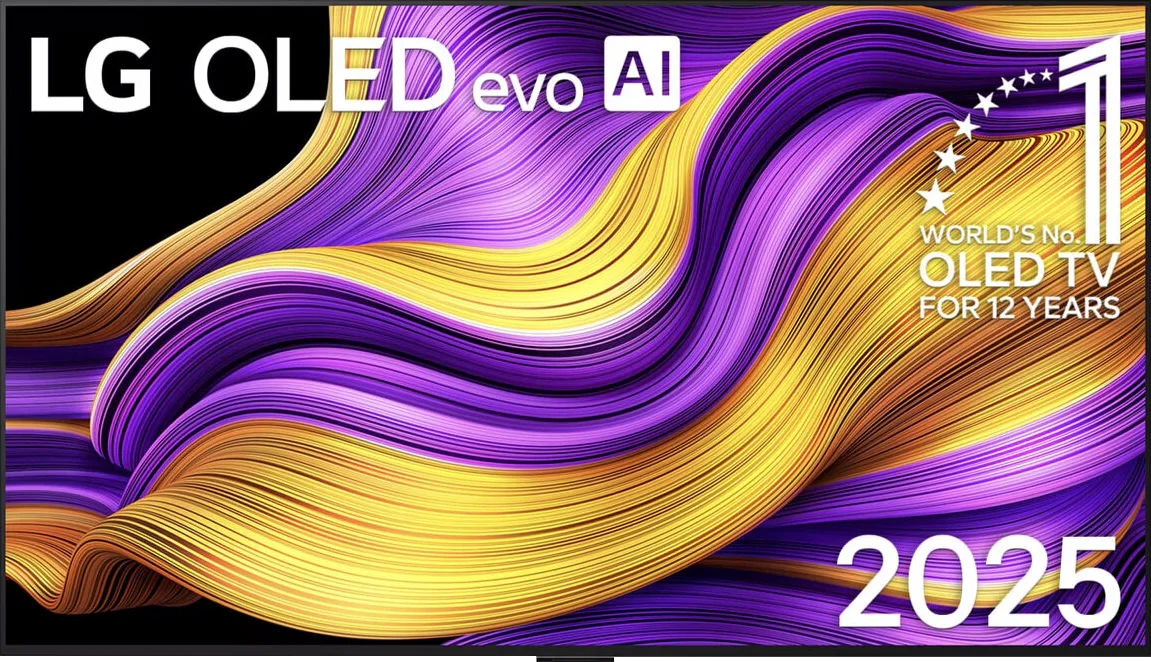
Panel type: WRGB OLED
Resolution: 3840x2160
System: WebOS
Model year: 2024
Complete the survey to find out the result

Panel type: WRGB OLED
Resolution: 3840x2160
System: WebOS
Model year: 2025
Complete the survey to find out the result

Overall rating
8.5
8.9
Movies and series in UHD quality
8.6
9.2
Classic TV, YouTube
9.1
9.2
Sports broadcasts (TV and apps)
9.0
8.8
Gaming on console
9.5
9.5
TV as a computer monitor
8.6
8.8
Watching in bright light
5.8
8.0
Utility functions
9.0
8.5
Apps
9.1
9.1
Sound quality
8.6
8.7
Complete the survey to find out what fits your preferences
Advantages
Phenomenal alignment of the image with the director’s intent
Reference colour reproduction after calibration
Very high brightness in HDR materials
Outstanding cooperation with consoles and computers
The panel effectively suppresses light reflections
Perfect viewing angles
Amazing black and contrast
Reference colour reproduction after calibration
Very high brightness in HDR materials
Excellent collaboration with consoles and computers
Great motion smoothness - OLED panel 165Hz
Many features for gamers: VRR, ALLM, HGIG, low input lag
Great operating system WebOS with many applications
Superb control thanks to the Magic remote with "pointer" function
Disadvantages
Visible tonal transitions
The sound of the built-in audio system - it could be better in this class of television
No support for DTS audio format
Worse (though still good) viewing angles than its predecessor G4
Different versions of the remote in derivative models – it's hard to predict which version we will get
Our verdict
The LG G5 is a television that not only continues but also enhances what we loved about the previous models in the G series. Instead of following the beaten path, LG opted for a new Tandem OLED panel – and it was a resounding success. Brightness? Simply, PH E N O M E N A L. HDR effect? Close to reference. Colours after calibration? Almost perfect. Motion fluidity, low latency, and features for gamers? At an absolutely top level. The G5 performs well both in films and games, day and night, with a decoder, console, PC, or even just the remote. Of course – it is not a product without flaws. It’s a shame there is no support for DTS, viewing angles have worsened compared to its predecessor, and the remote may vary depending on the version. However, when we look at the overall picture, it is hard not to feel that this is one of the best OLED televisions available on the market, and perhaps the best. Certainly, when it comes to its versatility and image quality without having to reach for the extremely expensive models of the competition. If you are looking for a television for everything – cinema, gaming, bright living rooms, watching online content or connecting a computer – the LG G5 is a device that simply delivers on every front without compromises.
TV appearance




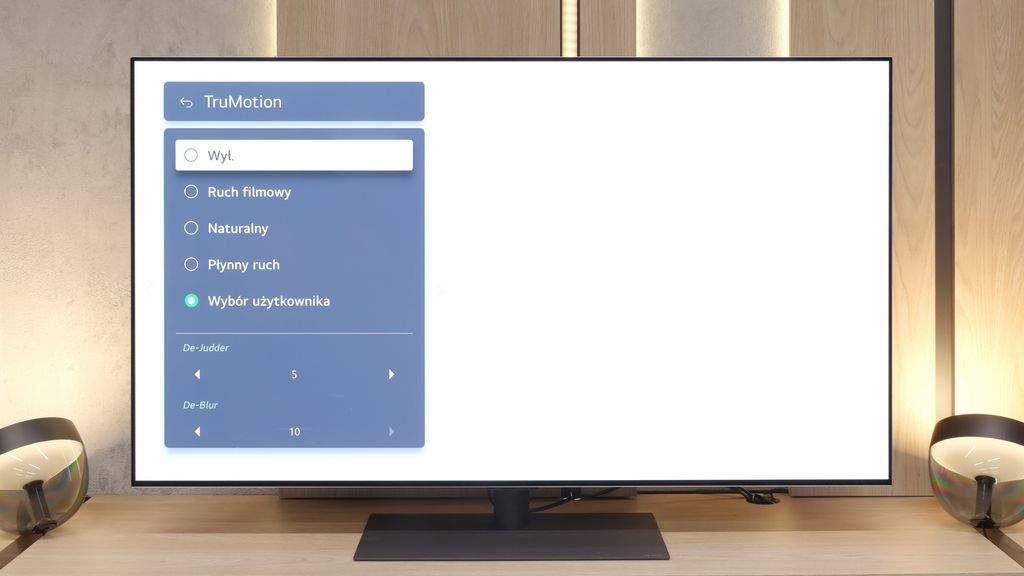

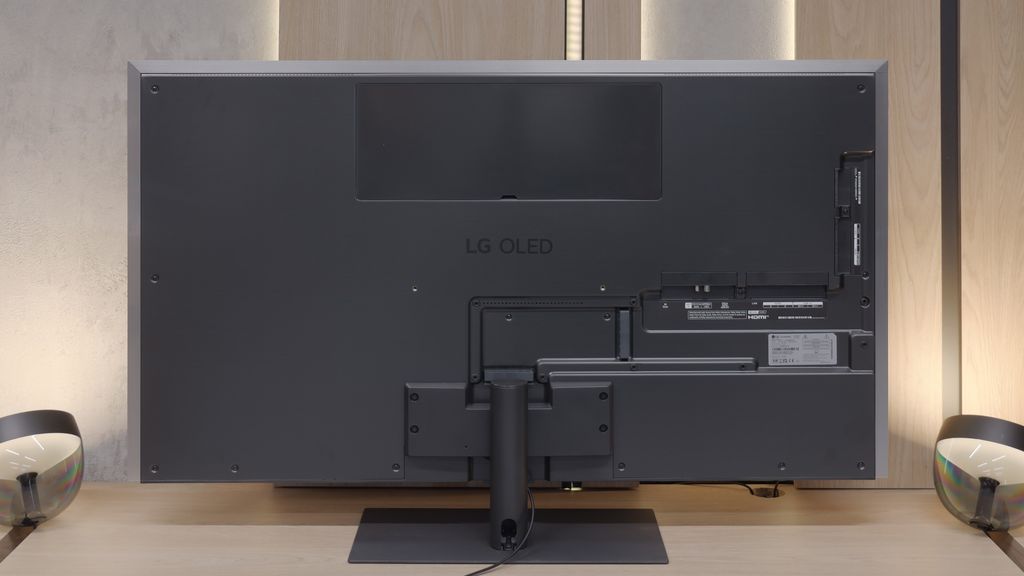
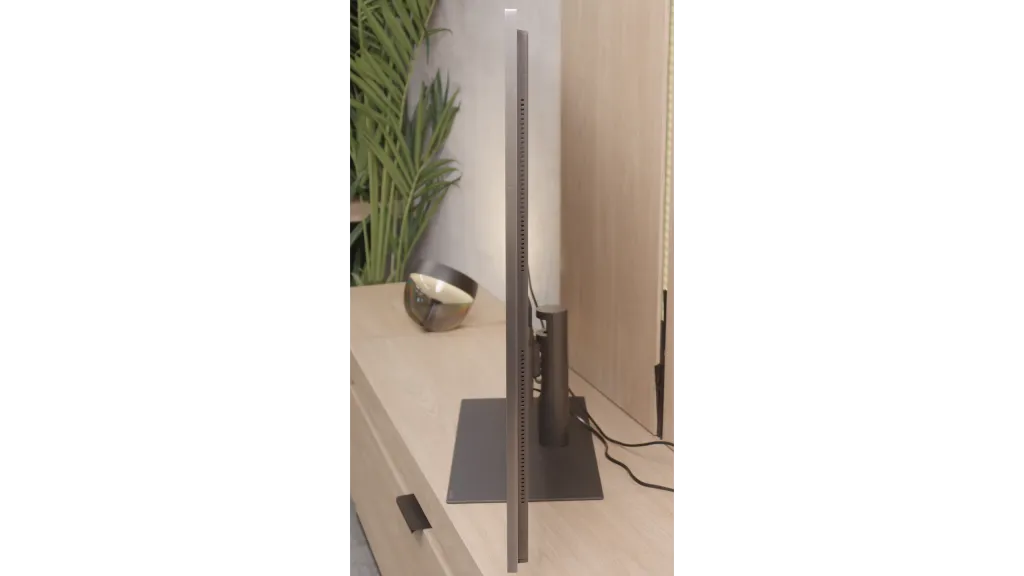
Contrast and black detail
10/10
10/10
Contrast:

Result
∞:1

Result
∞:1

Result
∞:1

Result
∞:1

Result
∞:1

Result
∞:1

Result
∞:1

Result
∞:1

Result
∞:1

Result
∞:1
Halo effect and black detail visibility:


LG G4, thanks to its OLED panels produced for over 10 years, delivers perfect results in contrast, black levels, and detail reproduction in the darkest scenes. It is worth noting that the panel itself is equipped with MLA (Micro Lens Array) technology, which LG showcased just a year ago during the launch of its predecessor. The use of organic matrix allows not only for achieving pitch-black levels but also for an extraordinary immersion and three-dimensional effect of the image, which is hard to find even in the best Mini LED televisions. Such image quality is closely correlated with OLED matrix technology, as each pixel is controlled by an electric impulse rather than by blocking filters on the panel. Therefore, if we want to achieve true black, the pixel is not turned on at all. This is clearly visible in test images, where the spotlight provides high brightness while being perfectly separated from each other. The situation does not change in the demanding scene from "Sicario 2," where no imperfections are visible in the form of dimming zone issues that we may encounter in LCD televisions.
LG G5, as befits an OLED television, impresses with its quality of contrast and blackness. In scenes with a lot of dark areas, the screen looks almost perfect, offering deep, absolute black and infinite contrast – an effect that still cannot be achieved on any LCD television. The new Tandem OLED panel does not introduce any negative changes compared to previous generations – blacks are flawless regardless of the content. Watching scenes from films like The Revenant or Oblivion, the excellent separation of lights is clearly visible, without any halo effect or brightening of dark areas. In this category, the LG G5 deserves the highest rating.
HDR effect quality
7.9/10
9.1/10
Luminance measurements in HDR:

Result
1474 nit

Result
1467 nit

Result
1403 nit

Result
1441 nit

Result
850 nit

Result
2346 nit

Result
2353 nit

Result
2399 nit

Result
2353 nit

Result
2012 nit
Scene from the movie “Pan” (about 2800 nits)


Scene from the movie “Billy Lynn” (about 1100 nits)


Static HDR10


Dynamic: Dolby Vision
Dynamic: Dolby Vision


HDR luminance chart:
LG OLED G5
HDR luminance
Luminance of RGB colors
LG OLED G4
HDR luminance
Luminance of RGB colors
LG G4 guarantees an incredibly vivid HDR effect, placing the television among the very best. The equipment of the highest model in the producer's 2024 portfolio with the second generation of micro-lens technology (MLA) has achieved a maximum brightness level of 1474 nits in real scenes. The only area where the product from the Korean manufacturer may lag behind LCD televisions with Mini LED backlighting is during the full-screen scenes featuring a lot of white. If we disregard the latter type of scene, the average result would be even higher. It is also worth mentioning scenes with very fine details, where each one shines at full intensity, which is not as evident in non-OLED televisions. The combination of such brightness and wide coverage of the DCI-P3 palette makes HDR materials more engaging than ever before.
LG G5 with the new Tandem OLED matrix brings the biggest change in terms of the brightness of the television. And it's substantial. This is truly an astronomically bright OLED. In every scene tested – whether it was point lights or full-screen whites from the film The Meg – the brightness on the G5 exceeded 2000 nits. Just a year ago, such values on an OLED were simply unimaginable. And here we are – the G5 is approaching, and at times even surpassing, the best Mini-LEDs on the market. A new feature of the Tandem OLED matrix is also the expanded colour gamut – and here the LG G5 performs almost perfectly. DCI-P3 reaches a full 100%, and BT.2020 is maintained at around 83%. These are some of the highest values currently available on the market – it's hard to find any other television that comes close to such results, unless we are talking about the best displays with QD-OLED panels. The G5 has nearly reference-quality HDR – both in terms of brightness and colour saturation. This is an OLED that can truly shine – and not just figuratively.
Factory color reproduction
8.4/10
7.8/10


Factory Mode
After calibration


Factory Mode
After calibration
The best factory mode in terms of colour reproduction was "Filmmaker". This was the one we used during our tests. Let's check how its characteristics looked before the calibration process. Looking closely at the white balance first, we can notice a significant dominance of red and green. As a result, the image had a warm yellowish hue. Such characteristics are typically observed in "Cinema", "Filmmaker" or similarly named modes. The effect of this colour balance was clearly visible in both SDR and HDR content, which after switching from "Standard" mode appeared distinctly yellow. Now, let's move on to two graphs that are responsible for the brightness characteristics and consequently the contrast of the image. The first one (Gamma), representing materials with a standard colour palette, performed decently. For most of the time, midtones and bright whites were reproduced very accurately; however, it noticeably lost the darkest details, which merged into a black blob. Conversely, HDR materials, represented by the EOTF curve graph, exhibited a significant drop in contrast due to a strong boost in brightness. The colours themselves also posed a problem, as can be seen on the "ColorChecker" graph, since they were noticeably under-saturated.
Our test unit, the LG G5, struggled with certain issues in the factory Filmmaker mode. And although most people might have found the picture acceptable, we knew that this television was capable of much more. This mode had a clear excess of blue tint in the white balance, resulting in a significantly cooled image – particularly in HDR modes, where there was additionally a lack of red. The picture appeared cold, and its sharpness was artificially boosted and unnatural. Another significant issue was the brightness characteristics. In SDR content, the situation wasn't the worst, aside from a slight dimming of the entire image. However, it performed much worse in HDR materials – due to improper brightness management, the smallest details could completely disappear from the image, while larger, bright elements looked overexposed and lacking in gradation. Fortunately, the G5 supports calibration using 3D LUT (a tool for professionals for colour calibration), so we decided to make use of its professional capabilities and see what it could really do. Because although it wasn't tragic even before calibration, the potential of this television definitely deserved more.
Color reproduction after calibration
9.5/10
9.8/10




The manufacturer has implemented extensive support for the calibration process in its LG televisions for many years. We therefore used 2- and 20-point greyscale adjustments, as well as an advanced CMS (Colour Management System), and got to work. As you can see, thanks to the procedure carried out, each parameter has significantly improved. The use of tools allowed for the achievement of extremely beneficial effects, which include: studio colour reproduction, recovery of details in dark areas of the image, appropriate brightness characteristics, and suitable colour saturation. This brings us as close as possible to the reference image, which is what the film director saw on the preview monitor. It is worth noting that the LG G4 televisions alone allow for even deeper intervention in image quality thanks to the ability to calibrate with 3D LUTs. However, this is a solution recommended only for post-production or graphic studios.
After performing the calibration process using professional tools, we can confidently state that the LG G5 offers nearly reference-quality image. Most of the errors related to white balance and the ColorChecker test are below a value of 2, which is a phenomenal result, practically imperceptible to the human eye. And while one could still nitpick that in HDR films the television still has a tendency to slightly dim the smallest elements of the image, in practice this does not negatively affect the overall impression. Kudos to LG, as once again they provide the user with enormous possibilities for adjusting their display – and this, combined with the very good parameters of the panel itself, results in an image that is truly hard to beat.
Smoothness of tonal transitions
6.2/10
8.5/10












The tonal transitions presented on LG G4 are not among the best. Each scene played from a BluRay disc with 10-bit HDR exhibited clear inconsistencies in colour transitions. This is particularly noticeable in the case of the film "The Green Knight", where issues related to posterisation were especially evident. This effect could also be observed in films of moderate and high brightness, such as "The Martian" and "Kingsman", which is rarely seen in televisions (especially of this class), which surprised us. Such results suggest that in scenes of low luminance with a large amount of black, this issue will be bothersome, even for a layperson.
The fluidity of tonal transitions in the LG G5 is a notable step forward compared to last year's model. Not only has brightness been improved, but also the method of blending colours, which the G4 sometimes struggled with. In the vast majority of scenes, the G5 has no issues with tonal transitions – there is no visible banding typical of WOLED technology, nor are there unsightly breaks between colours. Of course, in very dark areas of the image and with shades of grey, minor imperfections can still be noticed, but these are things that the average viewer would not even register. In short – it is really good.
Image scaling and smoothness of tonal transitions
8.2/10
8.7/10
Smooth transition function

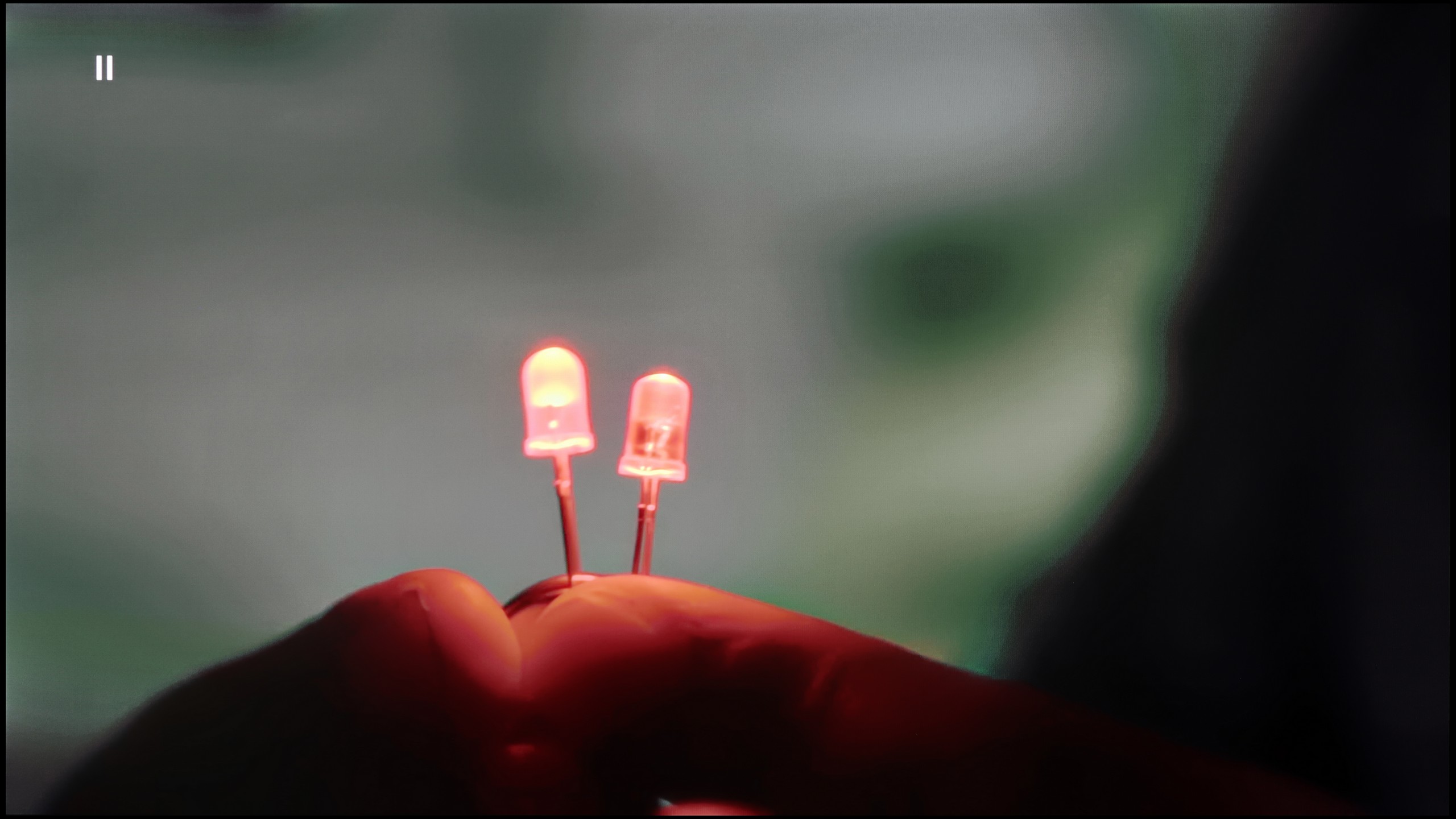
Image without overscan on the SD signal


The tested television did not perform particularly well with materials rich in tonal transitions, as a result of which we could observe a strong posterisation effect. However, there is a partial remedy for this issue. The manufacturer has equipped the LG G4 with a smoothing system called "Gentle Gradation," which we can apply at three levels: Low, Medium, and High. Each of these options guarantees quite a high effectiveness of smoothing on light colours, although it is low on darker ones. We recommend primarily using the first one, as the other two interfere with the director's intentions by removing film grain.
When watching lower-quality materials, the efficiency of the television during upscaling is extremely important. The image from the tested television is sharp and clear. However, one should pay attention to the jagged edges of fine details and minor issues around characters, such as the creation of halo effects, which occurs due to the sharpening imposed by LG G4 even when the lowest value on the slider, that is 0, is set. It is worth noting that this represents a certain change compared to the LG G3, which did not impose such strong image sharpening, even when the appropriate slider was set to position 0.
Upscaling and digital image processing in the LG G5 are quite impressive. The television handles lower quality content very well, especially when the "Smooth Gradation" feature is set to a low level. In this mode, it effectively removes unwanted artifacts and issues with visible tonal transitions. It may also slightly smooth out some desirable details, such as the subtle texture of clothing or skin, but importantly – it does not remove film grain, so it's difficult to speak of a serious compromise here. This is one of those options that is definitely worth enabling.
The G5 also performs well with upscaling, which improves the quality of older materials. The test image with the model looked really solid – slight jaggedness was visible, but that's an effect that cannot be completely avoided. Additionally, there were no problems with overscan, which – contrary to appearances – is not at all obvious, even in 2025.
Blur and motion smoothness
8.5/10
8.5/10

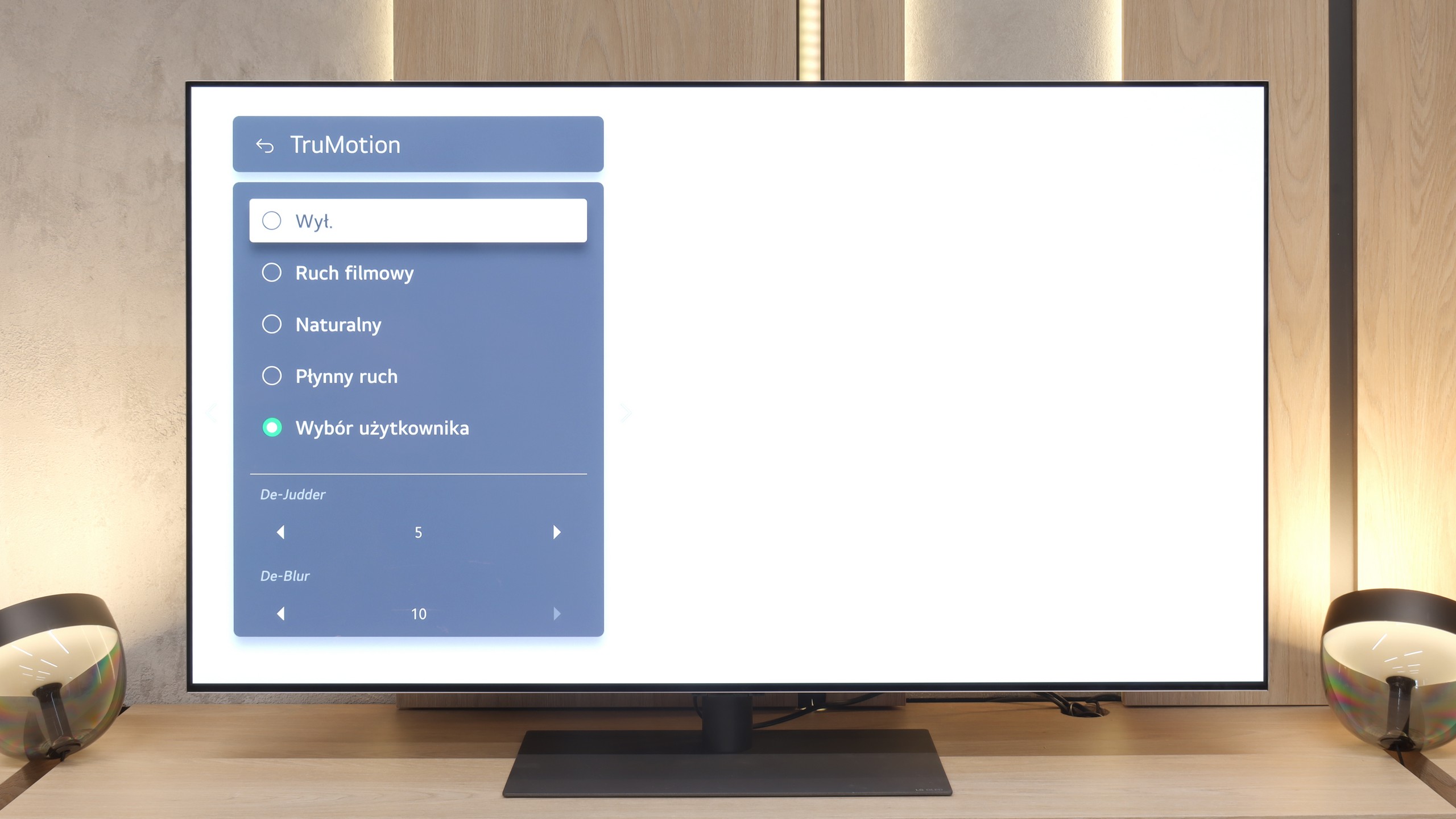
Blur (native resolution, maximum refresh rate):






Blur (BFI function enabled):
Image flickers in this mode



Image flickers in this mode



Blur ():
Blur (4K 165Hz):



The maximum refresh rate that we can set on the LG G4 is 144 Hz. Naturally, this is only possible when the LG G4 is connected to a very powerful PC. Otherwise, we will operate at a maximum refresh rate of 120 Hz, which is recommended if we primarily want to watch sports or content with high motion dynamics. For those requiring high image fluidity, the manufacturer has implemented a multi-level motion smoother called "TrueMotion". This has been divided into two separate sliders that adjust the sharpness of moving images (De-Blur) and judder (De-Judder). Both sliders can be set in the range from 0 to 10, with each level affecting the degree of smoothness, allowing everyone to find their golden mean.
The LG OLED G4 panel features an average response time of 0.78 ms (as directly derived from our measurements), enabling an incredibly clear image, unattainable by LCD televisions, which can have response times of several milliseconds. This is perfectly illustrated by the images from the "UFO Test", which show no trailing blur behind the object. Moreover, the LG OLED G4 test revealed that the television offers the ability to precisely adjust the motion smoothing function, allowing users to select the ideal level of image interpolation. We particularly appreciated this during fast-paced actions in video games, where the LG G4 performed exceptionally well, minimising any blurring. Thanks to OLED technology, this model eliminates so-called ghosting, ensuring that the image remains sharp even in the most dynamic sporting or cinematic scenes.
The motion smoothness on the LG G5 is simply phenomenal. The television is equipped with a 165 Hz refresh rate panel, and this, combined with the instant response time of the OLED matrix, delivers incredible results. The image does not tear or stutter like on traditional LCD televisions. Like most LG models, the G5 is equipped with a motion smoother, which can be useful when watching films – we are, of course, referring to the TruMotion mode. With the "De-Blur" and "De-Judder" sliders, we can adjust the smoothness of older materials according to our own preferences, whether we want to maintain the characteristic film stuttering or lean towards a more fluid, television-like effect.
Console compatibility and gaming features
10/10
10/10
- ALLM
- VRR
- VRR range40 - 144Hz40 - 165Hz
- Dolby Vision Game Mode
- Correct implementation of HGIG
- 1080p@120Hz
- 1440p@120Hz
- 4K@120Hz
- Game bar

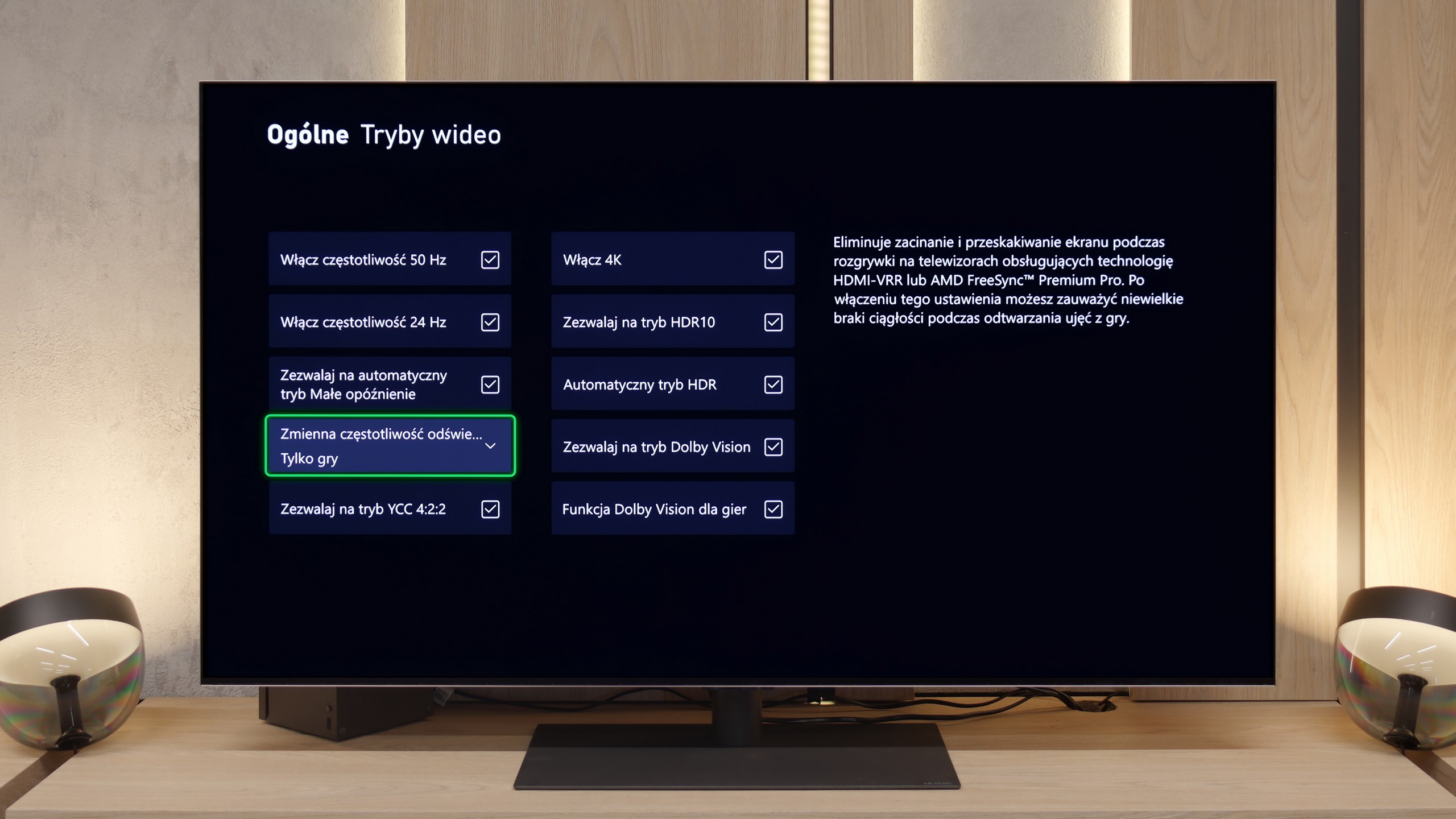

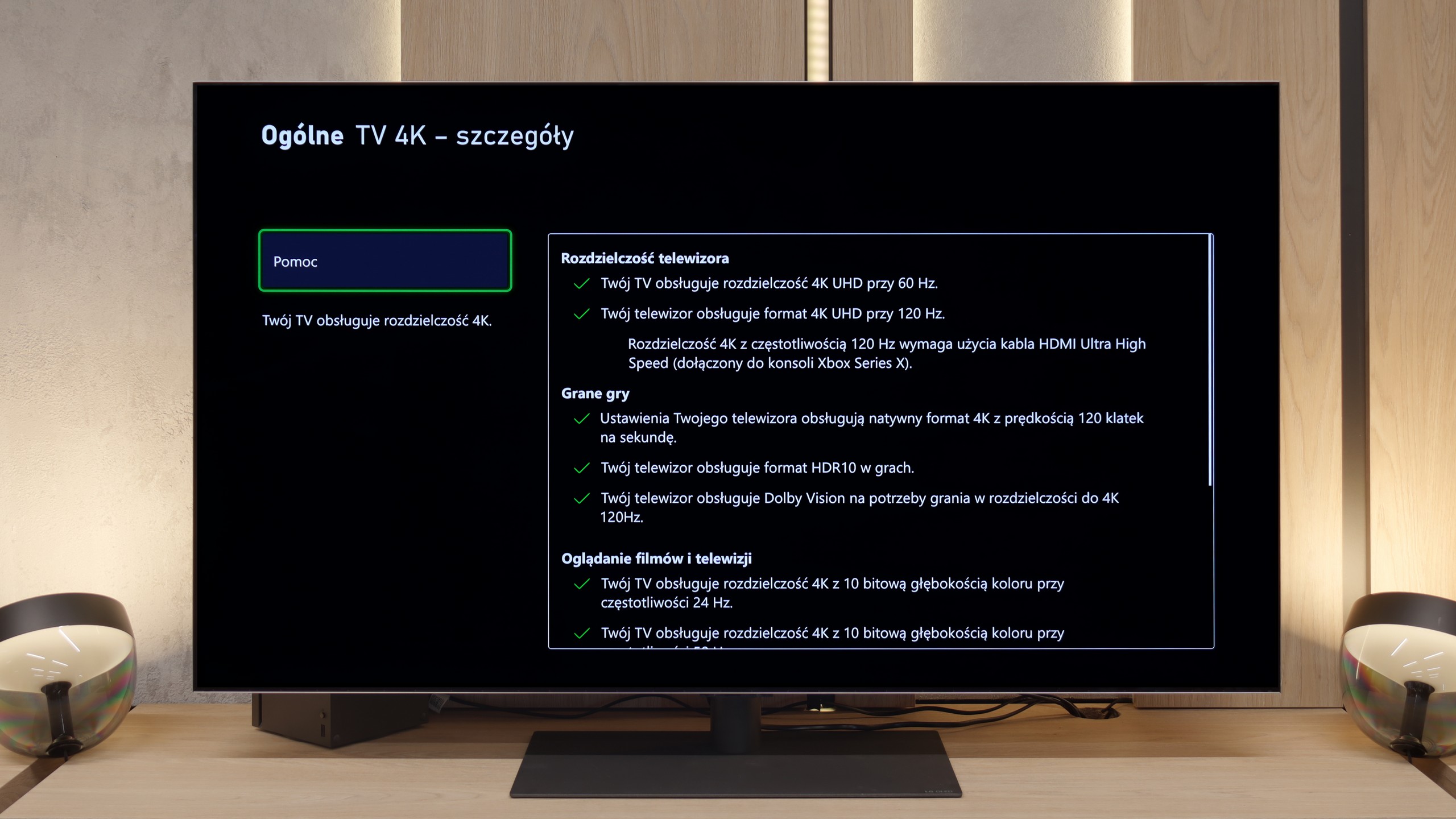

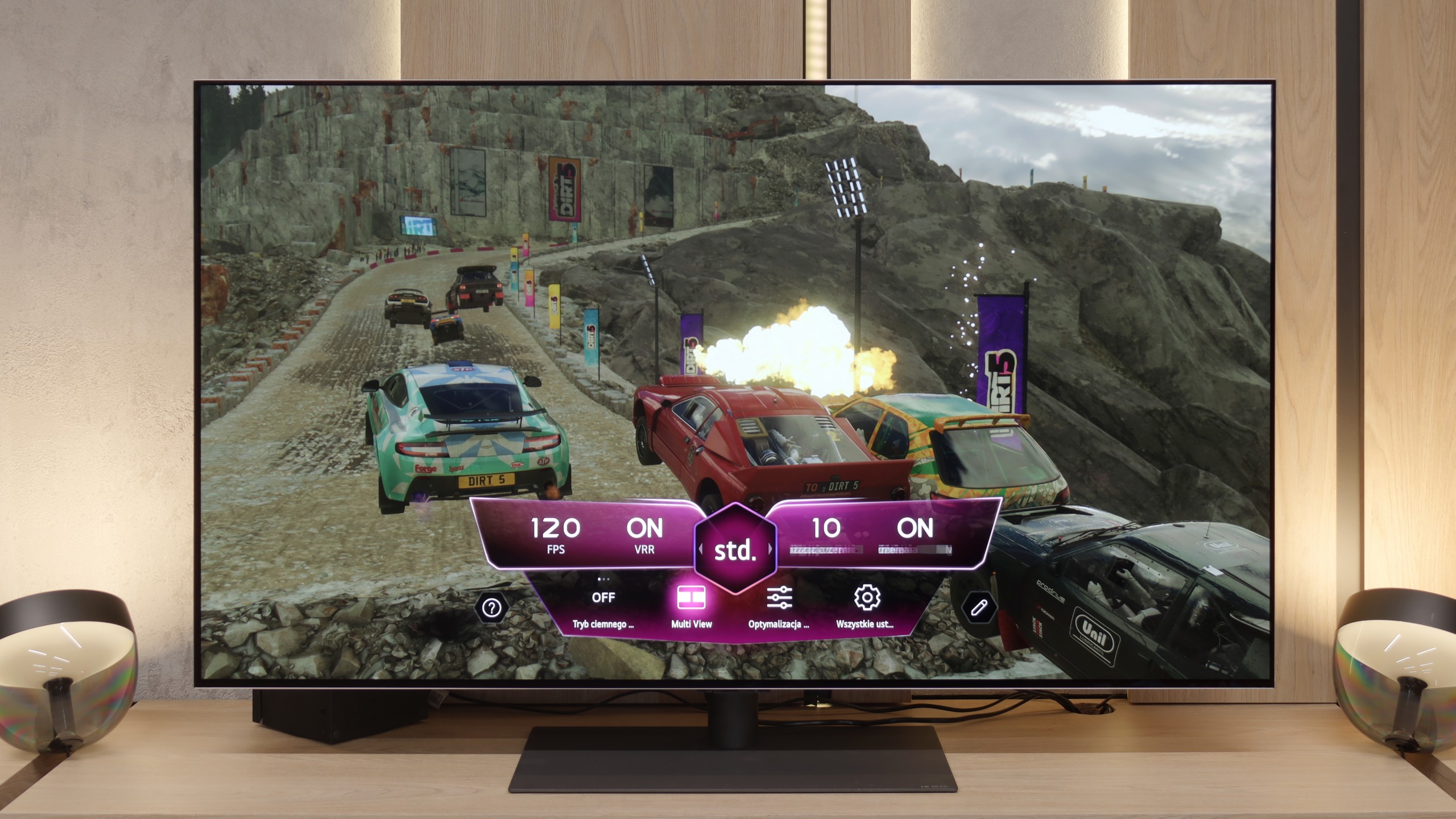

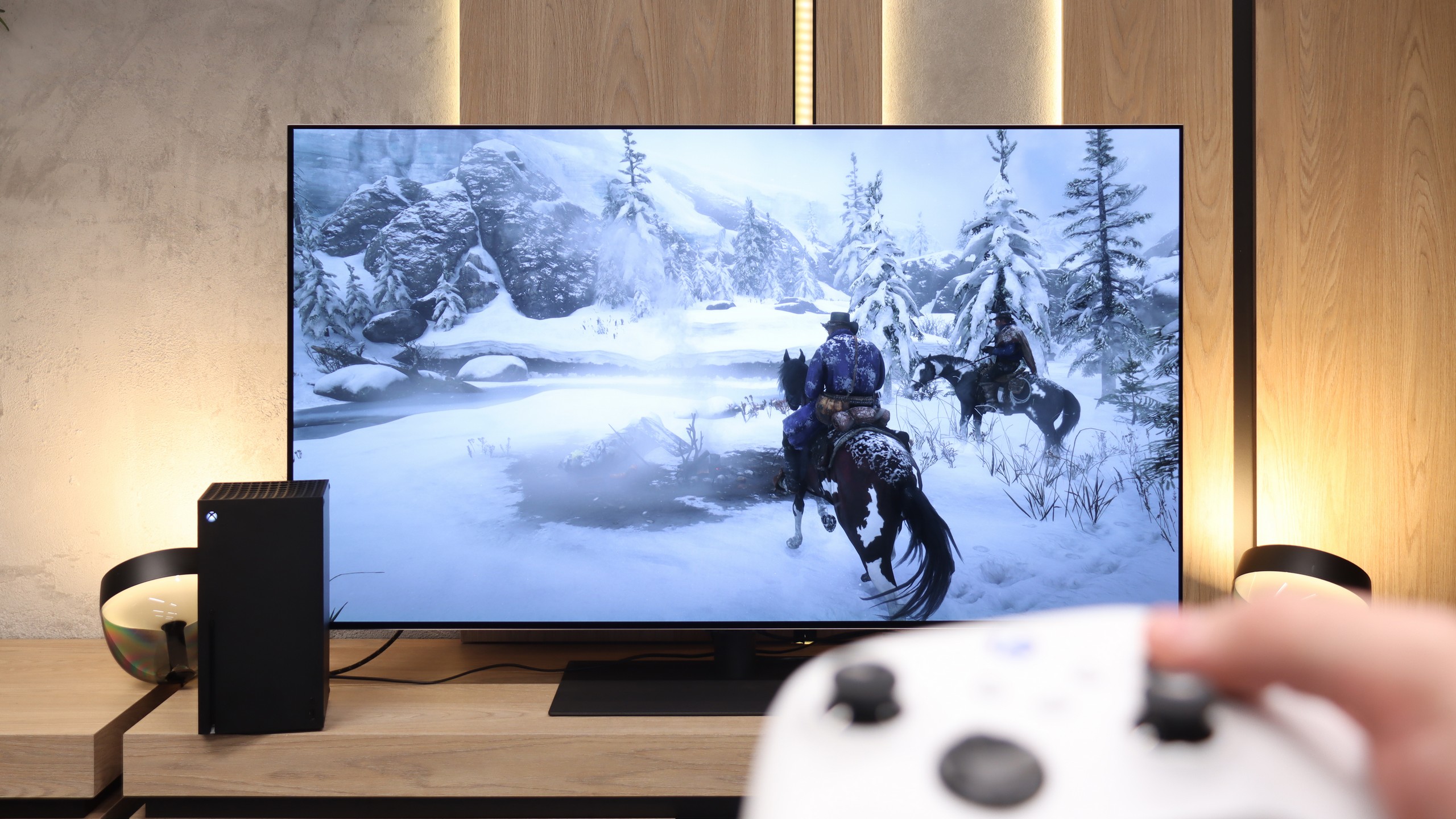
The LG G4 television supports all the features that make up the HDMI 2.1 standard. During testing, each of them activated without the slightest problem, which allows us to consider the television as designed for gaming. Their functionality will surely be appreciated by both console users and those connecting the LG G4 to a computer. It is also worth mentioning the correct implementation of the HGIG (HDR Gaming Interest Group) mode, which ensures that games mastered to brightness levels exceeding the maximum luminance of the LG G4 will correctly map tones, and the game's visuals will remain true to the original.
A nice touch is the existence of a special GameBar, which we can call up at any moment to check game parameters, but most importantly, to change them quickly. More importantly, enabling VRR technology does not degrade contrast, which is very common in televisions that feature local dimming or Mini LED backlighting. Of course, this is thanks to the OLED panel itself, characterised by pixel self-emission. As a matter of editorial obligation, we will only mention a slight grey flicker, which is somewhat normal after enabling VRR.
In summary, the LG G4, like practically all OLED televisions, is an ideal product for all kinds of games and online competitions. With fully-fledged HDMI 2.1 connections with a full bandwidth of 48 Gbit, features such as VRR, ALLM, G-Sync, FreeSync, or gaming in HDR Dolby Vision will bring much joy.
Features for gamers? Perfect. That should be sufficient for you to know what level we are dealing with here. The G5 is a television designed with gamers in mind, so we will find literally everything you could expect from a gaming screen. There is a Game Bar, there is support for high resolutions with high refresh rates – that is, 4K at 120 Hz, and even more, as the panel has a refresh rate of 165 Hz (which PC gamers will benefit from). The television supports variable refresh rate (VRR), automatic low latency mode (ALLM), and also correctly handles HDR in games thanks to the HGiG function. All of this adds up to one of the best sets of gaming features available on the market. Well done, LG.
Input lag
10/10
9.9/10
SDR
HDR
Dolby Vision
The input lag of the LG G4 is at an incredibly low level in every scenario. Even the most passionate gamers will undoubtedly appreciate the very low input lag at demanding 4K 120 Hz settings with HDR, measuring just 5 ms. It is also worth noting that the lag at the same settings but with Dolby Vision HDR enabled remains unchanged, which is not as obvious in the competition. Therefore, it deserves the highest score and recommendation.
The input lag on the LG G5 is incredibly low. The reaction time to our actions – whether we're playing with a controller, keyboard, or mouse – is almost perfect. The controls are instantaneous, and the game responds exactly when we expect it to. The Dolby Vision Gaming mode does introduce slightly higher latencies, but even then it's hard to nitpick – in the worst case, the values hover around 20 ms, which for most gamers will be practically unnoticeable.
Compatibility with PC
8.6/10
8.8/10

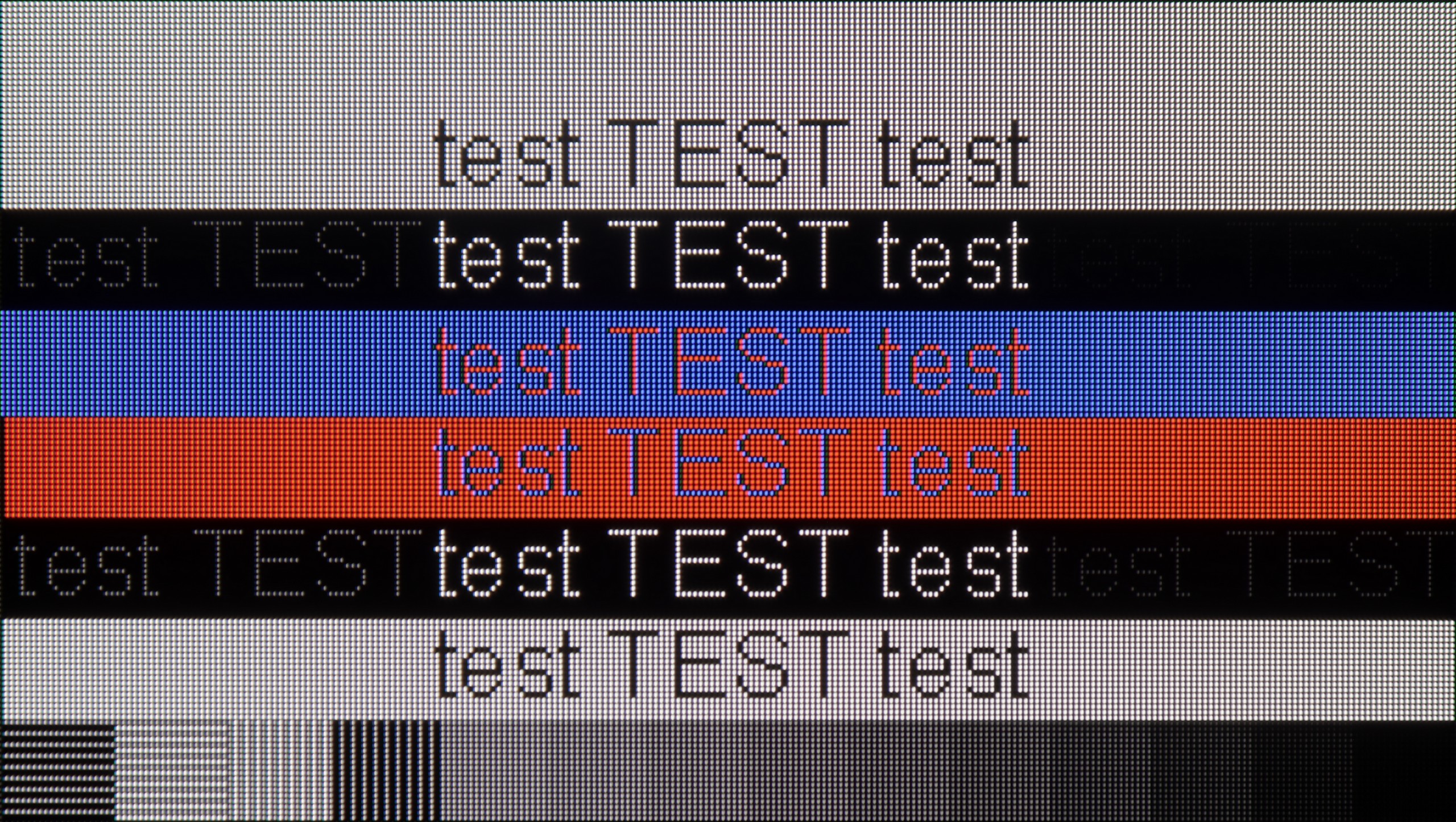
LG G4 combined with a PC performs excellently, thanks to its very low latency of just 5 ms, which is practically an instantaneous response between the mouse, the eye, and the screen. A crucial aspect when working on a screen is the readability of text, which in the case of the tested television is very good.
The RWBG pixel layout does not significantly impact the display of fonts or letters, which is a significant advantage over Samsung's QD-OLED panels. Users of both Windows and macOS equipped computers will certainly be pleased with the performance on the tested television LG G4.
Collaboration with a PC? Nearly perfect. The television, as we mentioned earlier, has fantastic features for gamers – including those using a PC. Onboard, we find full G-Sync certification, a 165 Hz panel, and a super-fast input lag of around 5 ms. Thanks to the correct implementation of chroma 4:4:4, fonts are very easy to read – both the smallest and the largest. Although due to the WRGB subpixel layout, there may be slight shadows around the characters, for most users this effect will be virtually unnoticeable. The G5 excels as a screen for work, entertainment, and gaming – also from a computer.
Viewing angles
9.7/10
7.5/10
The undeniable advantage of OLED screens equipped with MLA technology is their efficiency when viewed from different angles. There are no noticeable changes to the eye, regardless of where we are viewing from. This type of screen maintains consistent brightness, saturation, and white tone, in contrast to LCD matrices or OLEDs without micro-lens array (MLA) technology. The only matrices that can rival them are those produced by Samsung Displays, using quantum dot technology, namely QD-OLED.
The viewing angles on the LG G5 are very good, mainly due to the use of a WOLED panel. It's hard to find fault here – the image does not significantly lose brightness or quality even when viewed from the side. However, it should be fairly noted that there is a slight regression compared to the G4 model. The predecessor used an MLA panel with micro-lenses, which offered slightly better light distribution. Also, compared to QD-OLED panels, the angles are worse. Nevertheless, the overall perception of the image at an angle remains very good and should not be an issue in everyday use.
Daytime performance
5.8/10
8/10

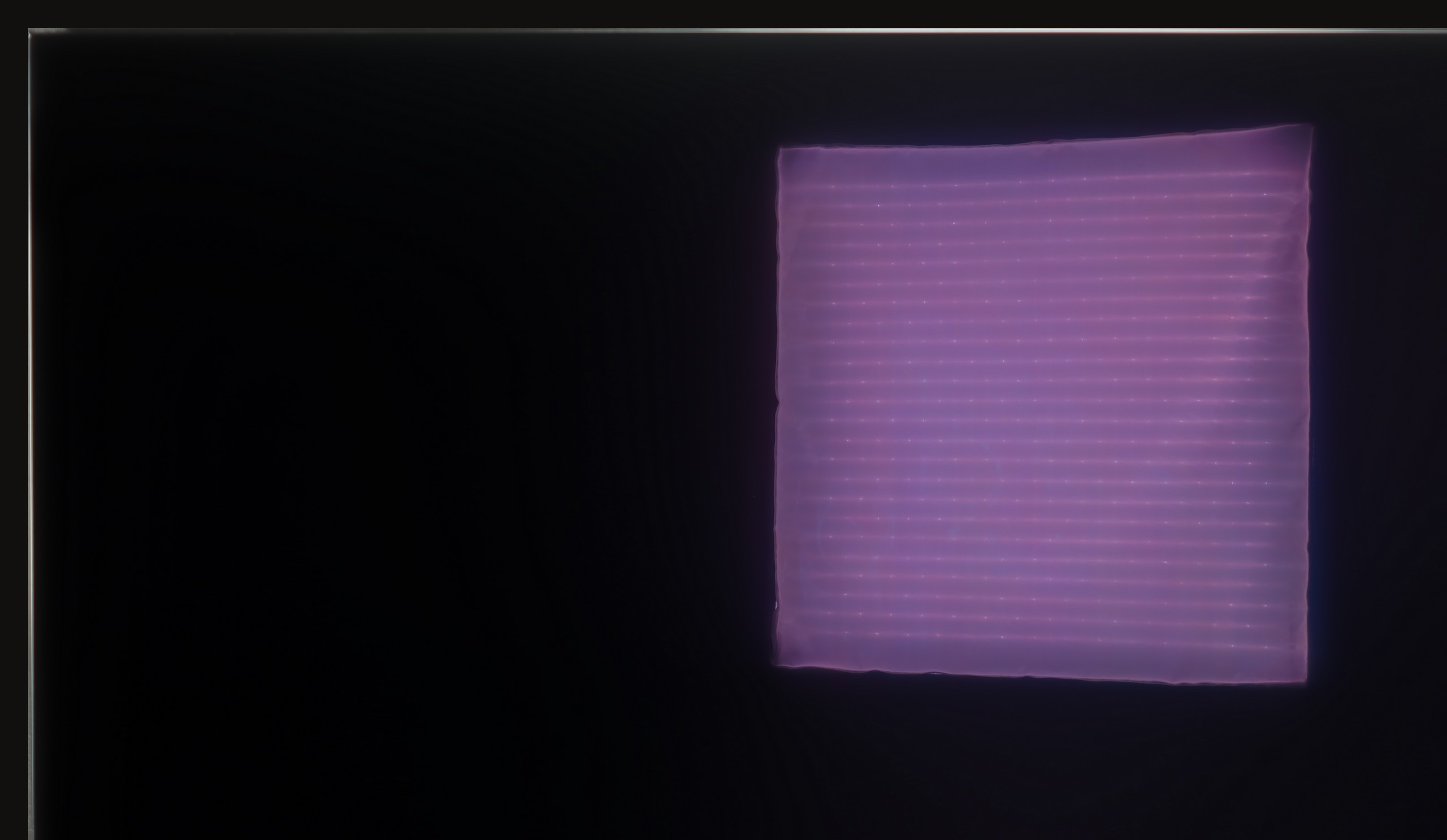


Panel brightness
Average luminance SDR
LG OLED G5: 810 cd/m2
LG OLED G4: 482 cd/m2
The glossy coating of the panel in LG G4, although it sounds like a negative, is in fact the opposite. Thanks to it, the LG G4 television maintains very high efficiency and effectively suppresses all reflections, "holding" them only at their source. It is also worth mentioning the quality of black during the day, which in the case of WRGB panels produced by LG Displays is outstanding. OLED MLA panels, despite a large number of advantages, are somewhat worse in this case, but still better in the context of competition from Samsung, whose QD-OLED panels grey out when triggered by light. The combination of brightness at around 500 nits and a glossy coating allows for daytime use of the television, unless the user has a living room with large glazing.
The LG G5, thanks to its very high brightness, performs excellently in bright rooms. Even with SDR content, the average brightness value is around 800 nits, which is significantly more than in standard televisions. It will handle a bright living room with ease. Although the panel averages moderate reflection suppression, it still maintains significantly better blacks and colours during the day than QD-OLED panels or those with a matte finish. The G5 will perform well in very sunny rooms – unless you truly cannot stand reflections on the screen. In that case, you will need to use blinds or consider purchasing a television with a matte panel.
Panel details
Subpixel Structure:

Panel uniformity and thermal imaging:


TV features
9/10
8.5/10
- HDMI inputs0 x HDMI 2.0, 4 x HDMI 2.1 48Gbps0 x HDMI 2.0, 4 x HDMI 2.1 48Gbps
- Other inputsIR (remote)
- OutputsToslink (Optical audio), eARC (HDMI), ARC (HDMI)Toslink (Optical audio), eARC (HDMI), ARC (HDMI)
- Network InterfacesWi-Fi 2.4GHz, Wi-Fi 5GHz, Ethernet (LAN) 100MbpsWi-Fi 2.4GHz, Wi-Fi 5GHz, Ethernet (LAN) 100Mbps
- TV receptionDVB-T, DVB-T2, DVB-S, DVB-S2, DVB-CDVB-T, DVB-T2, DVB-S, DVB-S2, DVB-C
Classic features:
- Recording to USB (terrestrial TV)
- Recording programming
- Picture in Picture (PiP)
- RF remote control (no need to aim at the screen)
- Backlit remote control
- Teletext
- Audio only mode
- Bluetooth headphones support
- Simultaneous Bluetooth headphones & TV audio
Smart features:
- AirPlay
- Screen mirroring (Windows Miracast)
- Voice search
- Voice search in native language
- Ability to connect a keyboard and mouse


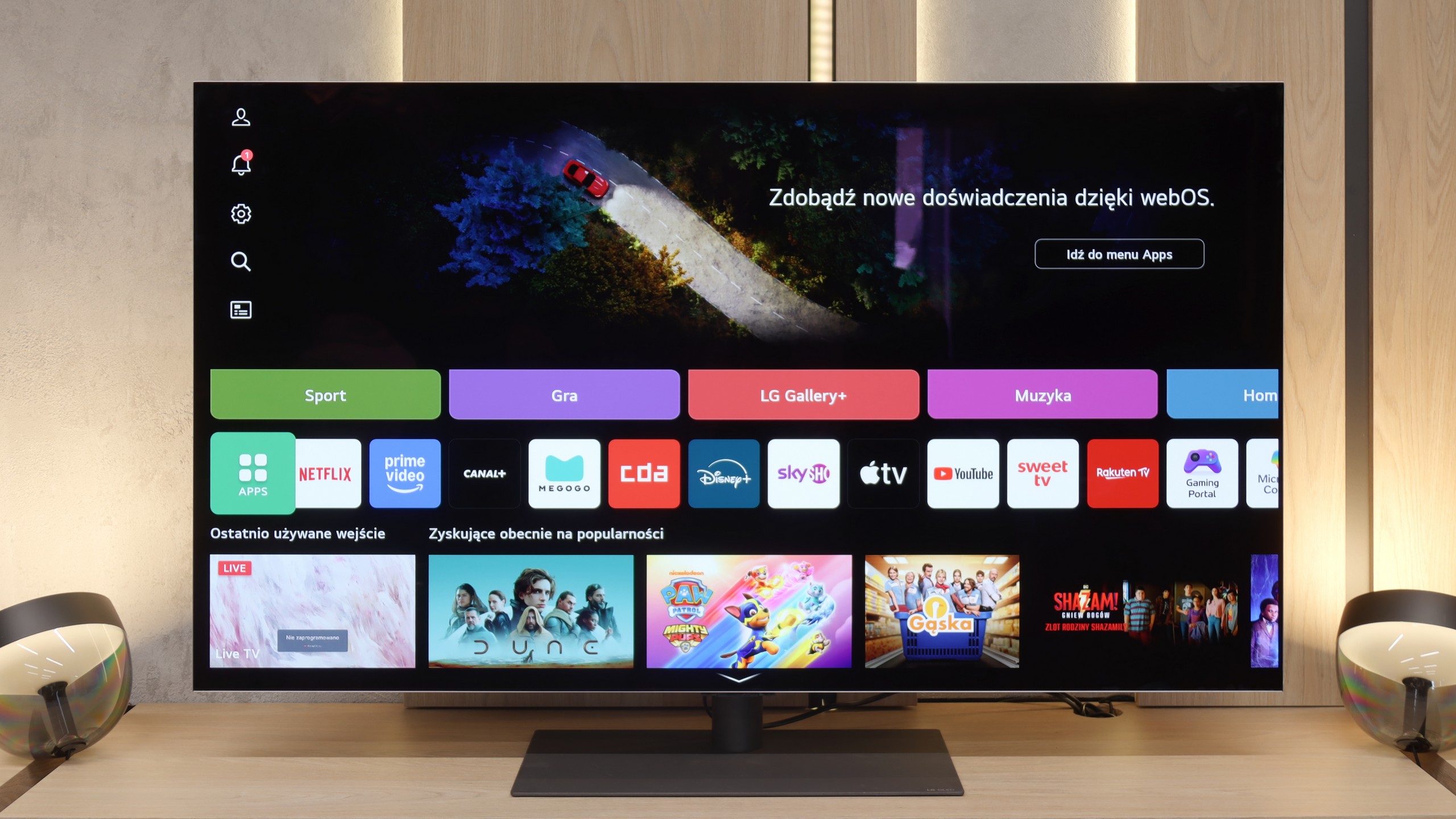
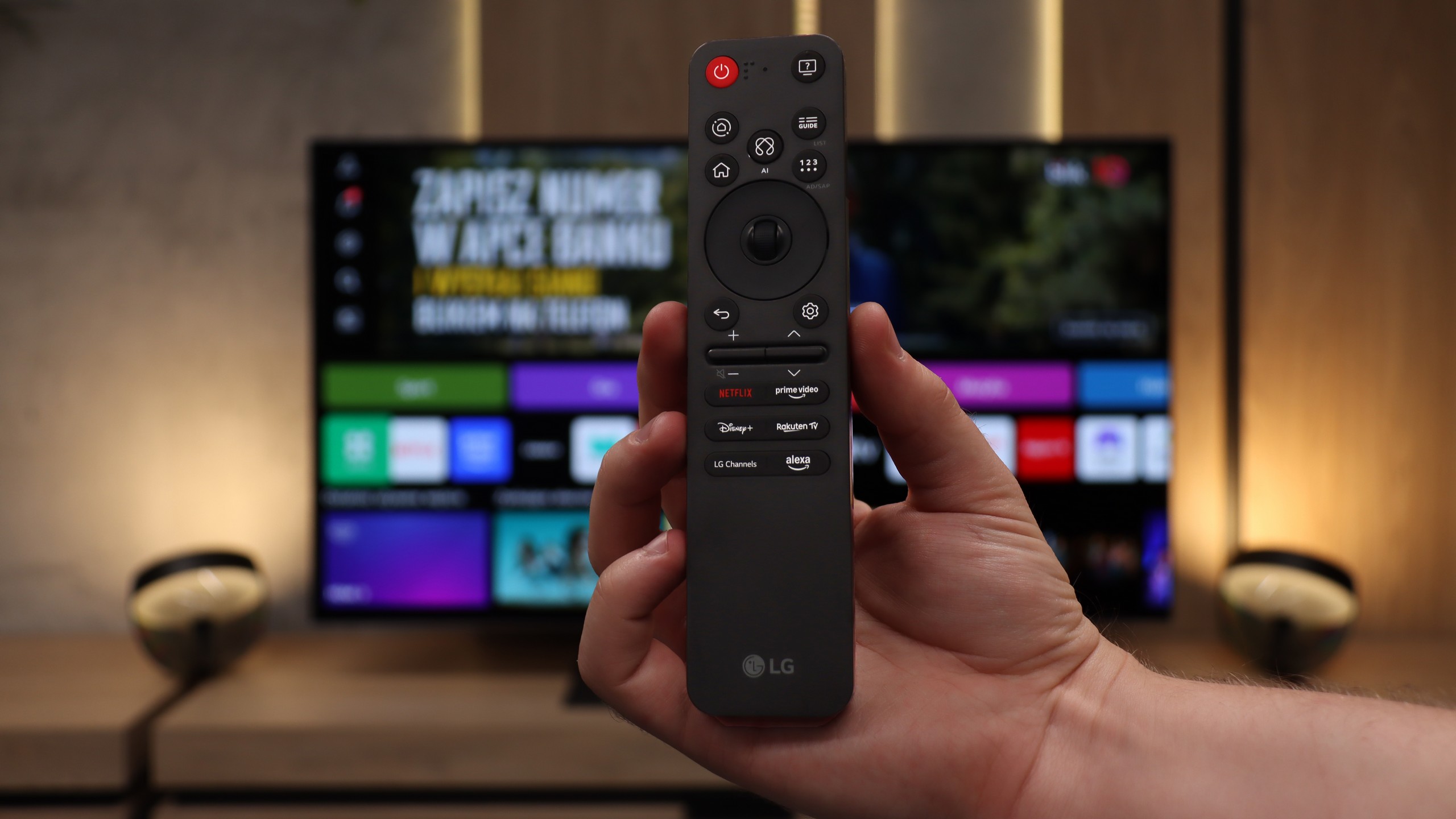
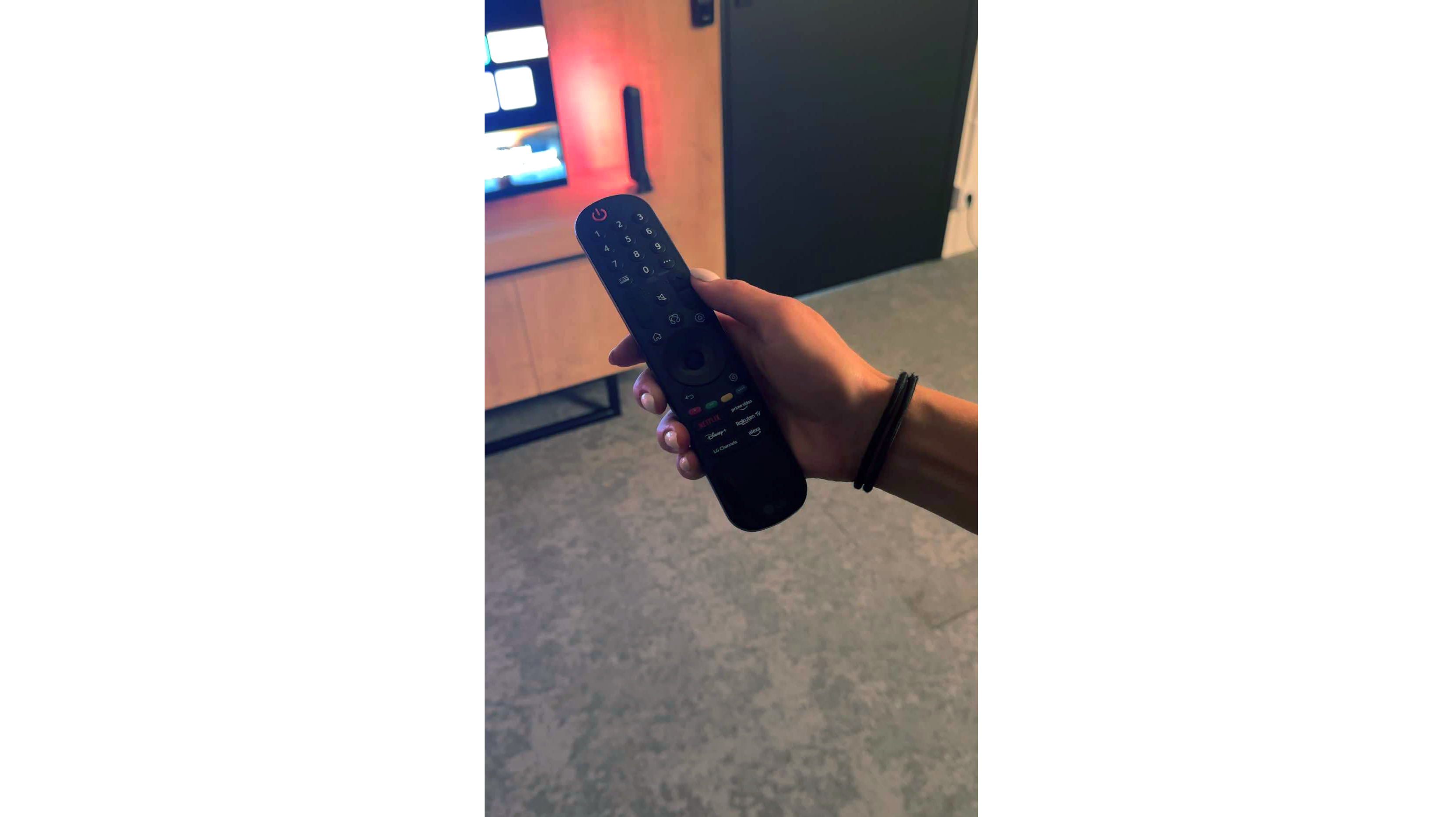
LG uses the well-known proprietary WebOS system, which has been around for many years. The system itself offers practically all the most important applications, and those that are missing can be counted on one hand, such as CDA and KODI.
WebOS also boasts a highly regarded feature that allows users to perform operations using a cursor that appears when the remote is moved. The convenience provided by this function is invaluable when typing queries or passwords for portals. WebOS, like most systems, also supports functions such as screen mirroring, AirPlay, voice search in Polish, and the ability to connect headphones via Bluetooth. On a more practical note, WebOS allows us to use both headphones and the LG G4 television speaker simultaneously, which will certainly be a great convenience for those with hearing impairments. Among the more interesting features, particularly appreciated by sports fans, is the ability to set an alert for upcoming matches, ensuring that we never miss a broadcast. The home panel also deserves praise, allowing control of all smart devices connected to the home network. For example, the end of a washing cycle will be signalled by a notification in the top right corner.
In summary, the WebOS system, although less known and having certain limitations compared to Android TV, offers stable and fast performance and supports most functions that may be needed by users. It is a solid solution for those looking for a simple and effective operating system in their television.
Classic features
LG G5 has a lot to offer when it comes to classic television features. Aside from the inability to watch two sources (PIP), the television handles everyday usage excellently. There are no issues connecting external Bluetooth devices, such as headphones, and the EPG interface is very clear and understandable – even for those who are not particularly tech-savvy.
Smart TV Features
The Smart TV in the G5 operates on the WebOS system – it is the heart and brain of the entire television. With the Magic remote, using the G5 is truly enjoyable. We control the cursor on the screen with wrist movements, which somewhat resembles using a mouse in the air. The system itself is highly developed and offers everything one could expect: AirPlay, screen mirroring, voice search, and voice commands – all of this works smoothly and without delays. Without a doubt, it is one of the best operating systems in televisions on the market.
Note:
During our tests, we had virtually nothing to complain about – perhaps with one exception: the confusion surrounding the remote. Depending on the market and the specific version of the model, you may encounter the new, minimalist Magic remote (without a numeric keypad) or the older version with a full set of buttons. We tested the G54LW model, which came with the new Magic remote, but it's hard to say how the situation looks in other variants. It may be a similar situation to the LG C5 series, where the addition of the remote also depends on the specific market.
Playing files from USB
8.5/10
9/10
Supported photo formats:
Maximum photo resolution:

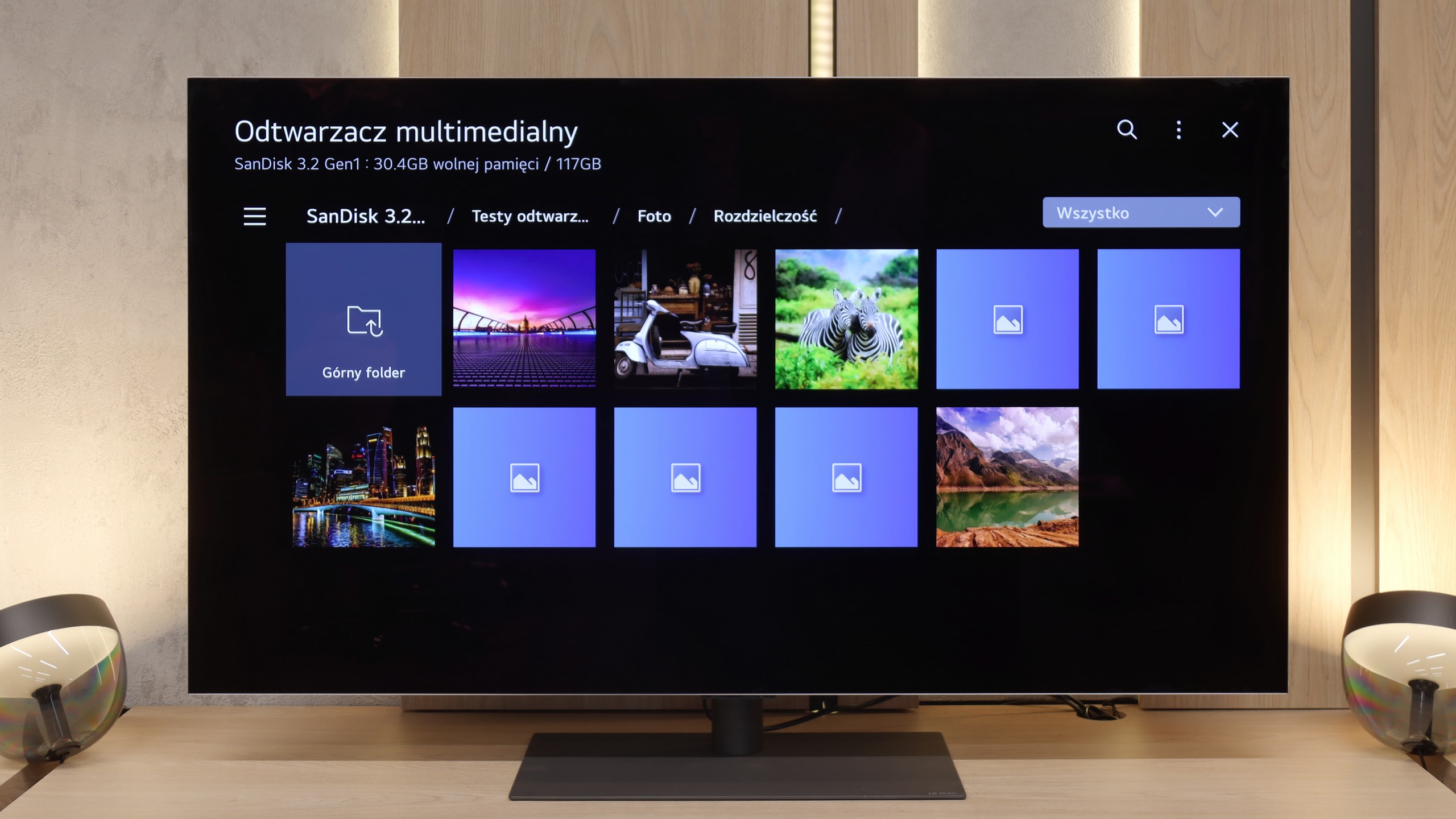
The default media player on the LG G4 performs well with most image types, although the absence of a few equally popular ones is surprising. It successfully plays videos recorded in practically all the most popular formats, including Dolby Vision. The only codec that the G4 cannot play is H.266 VVC, although this is currently rather unused. However, attention should be paid to the supported image formats, of which there are only two: JPEG and PNG. Users of Apple devices may feel disappointed by the lack of support for the HEIC format, which is the default format for photos taken. A remedy for this is to use the built-in AirPlay feature. We will also mention the lack of support for TXT subtitles.
The built-in media player in the LG G5 is really very good. It supports practically everything you might expect from a modern television – most popular formats work without any issues, and the app's performance is swift. Our only disappointment was the lack of support for very high bitrate HEVC 85 Mbit/s files – similar to the C5 and B5 models. Interestingly, the same file played flawlessly on last year's LG OLEDs, so it's hard to say what has caused this change. Nevertheless, in everyday use, the G5 will handle the vast majority of content without the need to connect any external devices for media playback.
Apps
9.1/10
9.1/10














































Sound
8.6/10
8.7/10
- Maximum volume-84dB
- Dolby Digital Plus 7.1
- Dolby True HD 7.1
- Dolby Atmos in Dolby Digital Plus (JOC)
- Dolby Atmos in Dolby True HD
- DTS:X in DTS-HD MA
- DTS-HD Master Audio
The assessment of sound quality remains always subjective. However, we must give LG G4 credit for maintaining a fairly good level of sound clarity. The biggest drawback of the built-in audio system in the television is the low bass range. However, this must be viewed from a different perspective — anyone choosing this television will likely have a home cinema system. In this case, broad support for audio codecs, including DTS-HD Master Audio and Dolby Atmos, will prove crucial.
The sound on the LG G5, considering its slim profile, is truly phenomenal. When listening to music, one can feel a light, pleasant bass, and in films, the dialogue is clear and audible – it does not get lost even in dynamic scenes. Unfortunately, a certain disappointment is the lack of support for the DTS format, which LG used in its older models. It’s a shame, as many home cinema enthusiasts may feel this as a step backwards.
Sound Quality Test
No sound test video
Acoustic Measurements
No acoustic data
84dBC (Max)
75dBC
